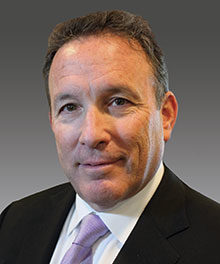WeWork, Take Two

I’ve got to hand it to WeWork’s new CEO Sandeep Mathrani. He’s not afraid of a challenge. He’s got his work cut out for him as he tries to perform CPR on WeWork, which is still reeling after its failed IPO and the departure of its controversial, larger-than-life CEO Adam Neumann.
In his favor, Mathrani has racked up great experience on the turnaround front. He transformed General Growth Properties, a shopping mall owner, after its bankruptcy and sold it in a deal valued at $15 billion.
But saving WeWork could prove to be even harder than that. For one thing, the troubled coworking company, founded in 2010, never had a viable business model. It lost $3 billion in three years by taking out pricey, long-term leases with little guaranteed revenue from its short-term tenants. And, with more than 500 locations, WeWork is still burning through money way faster than it should be.
No business, even one backed by a deep-pocketed investor like Softbank, can succeed if its team doesn’t figure out that at some point not only does it have to take in more money than it’s spending, but just as or more important, it also needs to give its financial backers a return on all that capital they invested. Mathrani’s success will depend on his ability to change the culture of a company that has pretty much ignored this inconvenient business principle and survived on sizzle, not steak.
It’s a very different way of operating from most middle-market firms. No one cuts middle-market CEOs the slack that Silicon Valley darlings get. The leaders we advise spend most of their time working on delivering business results and sustainable profits.
That came through loud and clear in the latest Marcum-Hofstra CEO survey, where the CEOs polled were, while still optimistic, a little less so than the last time we spoke with them in late 2019.
Many are focusing their business planning on technology and the availability of talent, as they navigate today’s uncertain environment. When they spend money, it’s in areas that will contribute directly to bottom-line results.
When we asked them how they are prioritizing capital investments over the next 12 months, for instance, leaders most frequently cited technology, with 68% saying this was one of their top three areas of focus. Healthcare companies led the pack, with 41% saying they planned to invest in this area. That is likely to contribute to greater efficiencies.
Given the tight labor market, many companies say they are shoring up their investment in talent recruitment, as well. Restaurants and catering companies topped the list, with 33% planning spending in this area. The transportation and distribution industry followed, with 25% of companies expecting to invest in attracting the right personnel.
Equipment was another key area of investment in our survey. Transportation companies were the leaders on this front, with 63% planning capital spending in this area. Not far behind were wholesale and distribution companies, with 50% anticipating an investment.
Transportation, recruiting and equipment aren’t glitzy parts of most businesses and investing in them won’t get CEOs a front-page story in The Wall Street Journal. What it will bring is new business opportunities and revenue. That’s what counts if you want to keep a company humming, year in and year out.
P.S. Well, we finally saw a woman coach at the Super Bowl! It took way longer than it should have, but it was great to watch the 49ers’ Katie Sowers at the big game. No doubt, she’ll be a powerful role model for other talented women in professional sports – and perhaps other fields as well. It was especially great that my daughter Lily (10) was there with me to see it for herself in person.
